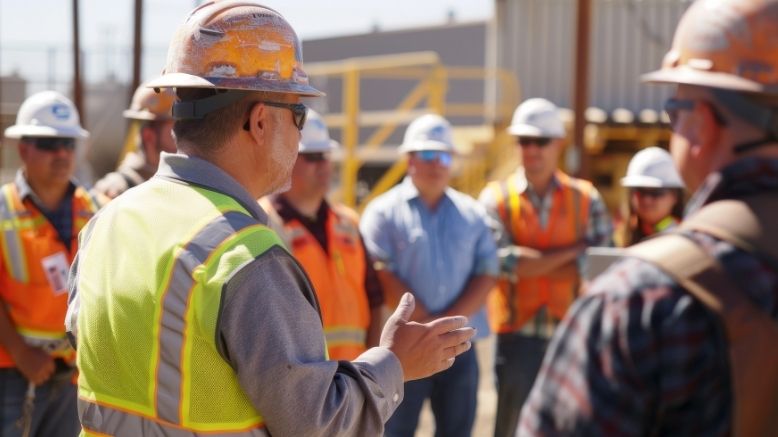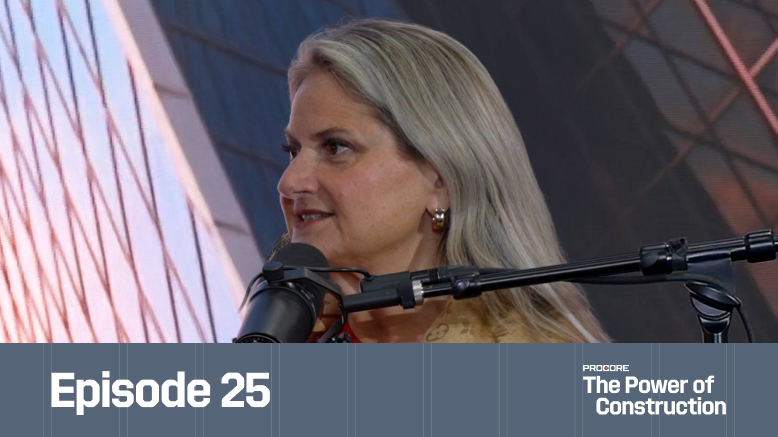— 4 min read
3 Reasons for Construction Companies to Take The Digital Leap


Last Updated Sep 23, 2025

Nick Caravella
Director of Growth and Industry Strategy
As the Director of Growth and Industry Strategy at Avicado, Nick Caravella brings a unique blend of expertise forged at the intersection of the built environment, cutting-edge technology, and organizational design. At Avicado, Nick partners directly with clients, translating visions into reality by tackling operational and technological hurdles. His roles as Director of Thought Leadership and inaugural Product Manager highlight his deep understanding of product development, market trends, and the strategic application of technology within the construction industry. Nick earned his Bachelor of Architecture from the New Jersey Institute of Technology and has leveraged his foundational knowledge to empower Owners thorough developing advanced technology systems that help them better plan, deliver and operate complex infrastructure projects. Connecting end-user needs with leadership objectives and collaborating effectively with both vendors and technology teams supports Nick’s mission to help Owners deliver with more confidence, clarity, and control in a world that isn’t getting any simpler.

Jonathan Greene
Writer
Jon Greene is a freelance educator, writer, and award winning theater maker. As an educational writer he has created content, lessons, and led seminars for Young Audiences of Louisiana, Hynes Charter System in New Orleans, Centre Stage School of the Arts in Singapore, 'Friends of The Museum' Docent Workshop in Singapore, The Prague Public High School System, Moleac Pharmaceuticals, and with the Grand Portage Ojibwa Tribe. His work and writing for theater has been featured in Howlround and American Theater Magazine and he is the recipient of 2 regional theater awards in his home of New Orleans. He is a BFA Graduate of Boston University and a previous Kennedy Center Fellow.
Last Updated Sep 23, 2025

It’s no secret that the digital infrastructure of our world has grown exponentially. Increases in data centers and fiber optic connections have opened up massive space for digital technologies systemized to support the construction industry. The benefits for owners, their partners and projects are numerous.
Accessibility and optimization of data means increased clarity, improved efficiency, deeper communications both downstream and up, buy-in from a plethora of stakeholders and a continuous return on investment as more projects come online.
Yet, even amid this boom in digital opportunities, there remains a surprising level of hesitancy to embrace a digital transition and utilize their inherent perks on projects. That’s why it's important for owners and developers to understand that the opportunities available to them aren’t as foreign as they may initially feel.
Here are three major reasons why construction companies should take the leap into optimizing opportunities with the growing wealth of digital tools.
Table of contents
1. Digital insights optimize your building’s lifecycle.
More often than not, a new project is not a one-off. Rather, it’s part of a fleet of buildings that need to be maintained, improved and sometimes even taken offline. This is all part of managing efficiency. But those decisions can only be made from obtained and optimized information. It’s not realistic to make them from historical knowledge trapped in people’s heads, on papers or in file folders and storage rooms.
The digital tools for managing construction and maintenance information allows owners to think about the whole life cycle of their investment, and sits right alongside the ESG aspect of making sustainable decisions for their assets.

Nick Caravella
Director of Growth and Industry Strategy
Avicado
This is exactly the moment to turn to the digital systems available. They can manage all of that information, do it quickly and keep it close and easily scannable. The result will be a deeper understanding of the whole life cycle of owner investments.
2. Your “why” can create partners, not employees.
Considering the size and scope of most projects, it’s not uncommon to have a multitude of teams working under the umbrella of an owner.
Each of these teams is a critical part of a whole. Without grasping the operational nuance that owners themselves possess, that whole forms slowly and with greater difficulty. Too often each team is working on a set of shortened directions passed ‘over the fence’ step-by-step downstream.
Imagine how much easier would it be for me as a designer or me as a builder to understand your ‘why’ behind the project so that we could actually be true creative partners and bring the new stuff we're learning, come up with better decisions and partner in execution of that program.
Nick Caravella
Director of Growth and Industry Strategy
Avicado
This dilutes information and creates misalignments and redundancies. It can also lead to workers deciding to just trust their gut instinct rather than rely on actual knowledge and clear information. A well vested and well maintained digital platform is a tool that allows all of a project’s information to be accessible to all teams whenever needed.
With the transparent information these tools provide, no one is left guessing why a decision has been made. Instead they know and can understand it. Knowing why in this way creates unity resulting in work from a shared and vested approach built on clarity and increased trust.
3. Buying in now means not paying for it later.
Just because today’s digital solutions and the infrastructure necessary to support them has changed how we interact with our data doesn’t mean there hasn’t always been critical data to utilize.
Understanding how the digital infrastructure — both physically and technologically — need to work together in buildings that were delivered before these technologies even existed is the next necessary step in its optimization.
There's this aspect of connected data that is absolutely possible today, but it isn’t because we’re not asking the bigger questions like, 'what does it mean for us to capture this information in a way that is useable?'. We have to get more sophisticated than ‘I want it all’ because everything without specificity is kind of the same as nothing.
Nick Caravella
Director of Growth and Industry Strategy
Avicado
While there is a large upfront cost to initiating such a transition, it’s important to remember that an early increase in efficiency will reduce costs later in the project. Consider the inefficiency of how a traditional design delivery method creates partitioned and hard to use information that has intelligence redacted to avoid passing on risk; or submittals locked into a PMIS and not integrated in a transparent and accessible model.
Digitized systems supported through upgrades in infrastructure can remove these and other time-consuming — and often costly — holdups. There’s always a risk in taking a forward step, but unlike other risks, this one is interconnected with reward.
Innovation is just another form of change, and in the construction industry's fear of change can best, torpedo a project’s potential or even derail it permanently. When owners and developers feel uninhibited by the technology available to them, they are more likely to embrace it, and over time, cultivate a culture of innovation on each project in their portfolio.
Free AI in Construction Course with Hugh Seaton
Start learning today with industry expert Hugh Seaton and discover how AI can boost efficiency, reduce risk, and transform your projects.

Was this article helpful?
Thank you for your submission.
100%
0%
You voted that this article was . Was this a mistake? If so, change your vote
Scroll less, learn more about construction.
Subscribe to The Blueprint, Procore’s construction newsletter, to get content from industry experts delivered straight to your inbox.
By clicking this button, you agree to our Privacy Notice and Terms of Service.
Thank you!
You’re signed up to receive The Blueprint newsletter from Procore. You can unsubscribe at any time.
Categories:
Written by

Nick Caravella
Director of Growth and Industry Strategy | Avicado
As the Director of Growth and Industry Strategy at Avicado, Nick Caravella brings a unique blend of expertise forged at the intersection of the built environment, cutting-edge technology, and organizational design. At Avicado, Nick partners directly with clients, translating visions into reality by tackling operational and technological hurdles. His roles as Director of Thought Leadership and inaugural Product Manager highlight his deep understanding of product development, market trends, and the strategic application of technology within the construction industry. Nick earned his Bachelor of Architecture from the New Jersey Institute of Technology and has leveraged his foundational knowledge to empower Owners thorough developing advanced technology systems that help them better plan, deliver and operate complex infrastructure projects. Connecting end-user needs with leadership objectives and collaborating effectively with both vendors and technology teams supports Nick’s mission to help Owners deliver with more confidence, clarity, and control in a world that isn’t getting any simpler.
View profile
Jonathan Greene
Writer
Jon Greene is a freelance educator, writer, and award winning theater maker. As an educational writer he has created content, lessons, and led seminars for Young Audiences of Louisiana, Hynes Charter System in New Orleans, Centre Stage School of the Arts in Singapore, 'Friends of The Museum' Docent Workshop in Singapore, The Prague Public High School System, Moleac Pharmaceuticals, and with the Grand Portage Ojibwa Tribe. His work and writing for theater has been featured in Howlround and American Theater Magazine and he is the recipient of 2 regional theater awards in his home of New Orleans. He is a BFA Graduate of Boston University and a previous Kennedy Center Fellow.
View profileExplore more helpful resources

Profit from Predictability: Construction Software as a Business Strategy
For general contractors, managing complex, multi-million-dollar projects, every project phase — from planning and budgeting to on-site execution — is an opportunity to lose time and money. Construction software is...

Defending Against Financial & Legal Risks on Megaprojects
The construction industry has seen marked growth in megaprojects. Some experts classify any project over $500 million as a megaproject, while others argue that the build needs to be $1...

Unlocking Project Intelligence: Moving from Raw Data to Actionable Insights
The construction industry faces a wide range of challenges, from ongoing labor shortages to frequent cost overruns. But some the biggest hurdles all stem from unpredictability. The general contractors (GCs)...

Who is accountable for innovation in construction?
Everyone says construction needs to innovate—but no one agrees on who’s actually responsible for making it happen. Is it the owner? The builders? The tech vendor? Or is innovation everyone’s...
Free Tools
Calculators
Use our calculators to estimate the cost of construction materials for your next project.
Templates
Find a template to help you with your construction project tasks.
Material Price Tracker
Get the latest U.S. retail prices and view historical trends for common building materials.
Glossary
Explore key terms and phrases used in the industry.
